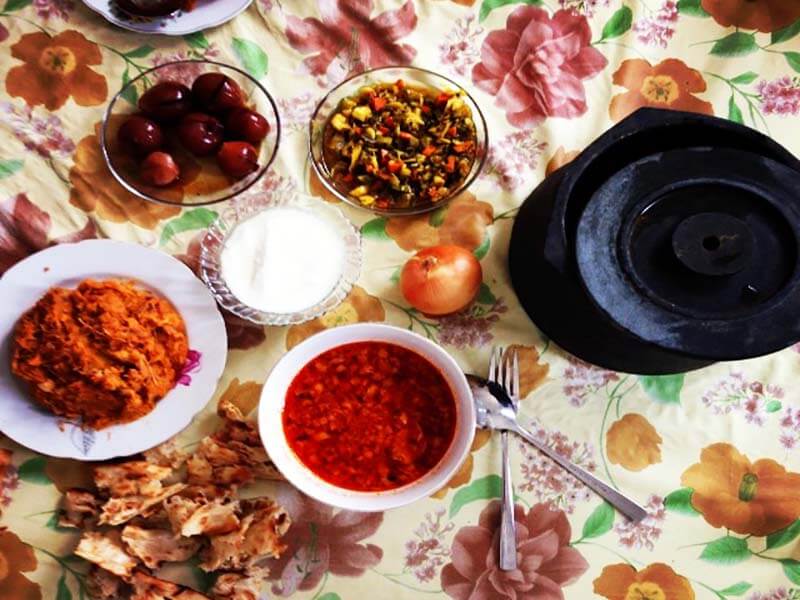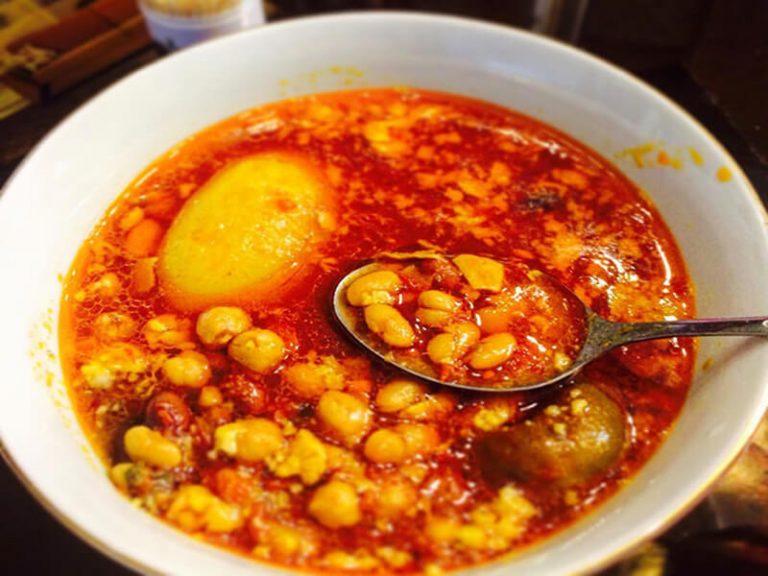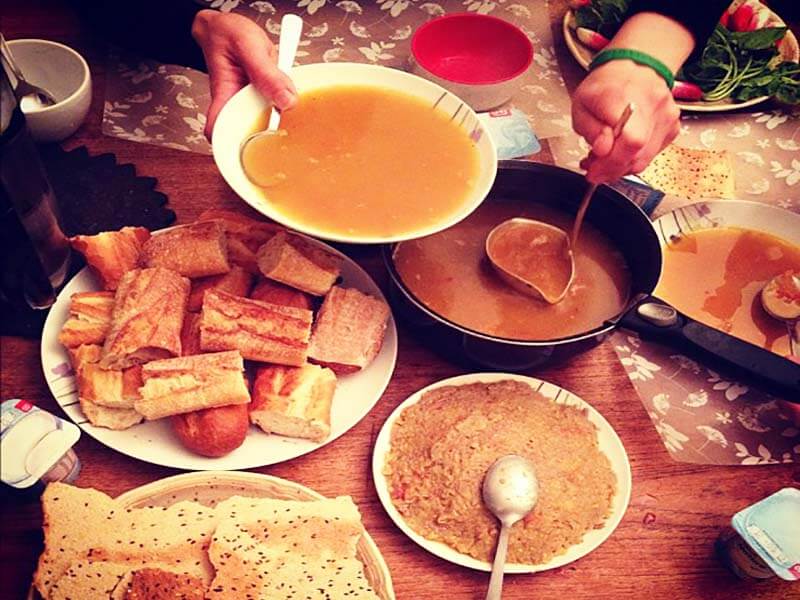
Abgoosht is a rich dish usually made by cooking lamb, chickpeas, white bean, onions, potatoes, tomatoes, turmeric, and dried lime. The ingredients are combined together with water and cooked for at least 2 hours. In many dizi restaurants, especially on holidays and weekdays, you can see the stone pots on the table of food lovers all across Iran.

How to serve Abgoosht (Persian lamb and chickpea stew)
Serving and eating Abgoosht is not only special but also a fun activity. First you pour the broth in a bowl and put small pieces of bread inside it, then you let it soak for a couple minutes. Then just like a cereal you have at breakfast, you eat it (we call this “tilit kardan” in Persian). After eating that, you have to mash up the remaining ingredients such as potatoes, beans, chickpeas and lamb until it looks like mashed-potato. Because of the way it is eaten and served Abgoosht is the food that brings all the family members together.

Although we consider abgoosht to be one of the original Iranian dishes, the fact is that, this type of food in today’s style does not have a long history in Iran. The broth was a kind of noble food which was eaten by wealthy families and kings, and the general public didn’t have interest. It was also cooked by nomadic nomads after they settled in a place and sacrificed a sheep.
It is said that at one time there was famine in Iran. A group of Iranians, who were mostly ranchers, loaded large cauldrons to feed the people, and only by adding legumes such as peas, beans and more water to the abgoosht, they were able to feed the large amount of people.
Little by little abgoosht restaurants opened up inside Iran, and this food became popular among the general public. Tomatoes entered Iran only during the Qajar period and have been added to broth ever since.

Among the different types of Abgoosht, we can mention Bozbash broth, Kashan bean broth, Arak and Lorestan curd broth, wheat broth, snake broth and bulgur broth.
In this Dizi, beans and vegetables such as fenugreek and parsley are used in abundance. Arak and Lorestan curd broth: In this broth, dry crunched curd and hot mint is poured.
As the name implies, wheat is also poured into it.
This type of food, which is mostly prepared in Southeast Asia and India, is a type of broth that uses snake meat instead of lamb and the people of that region believed that it is useful for protection against snake bites.
